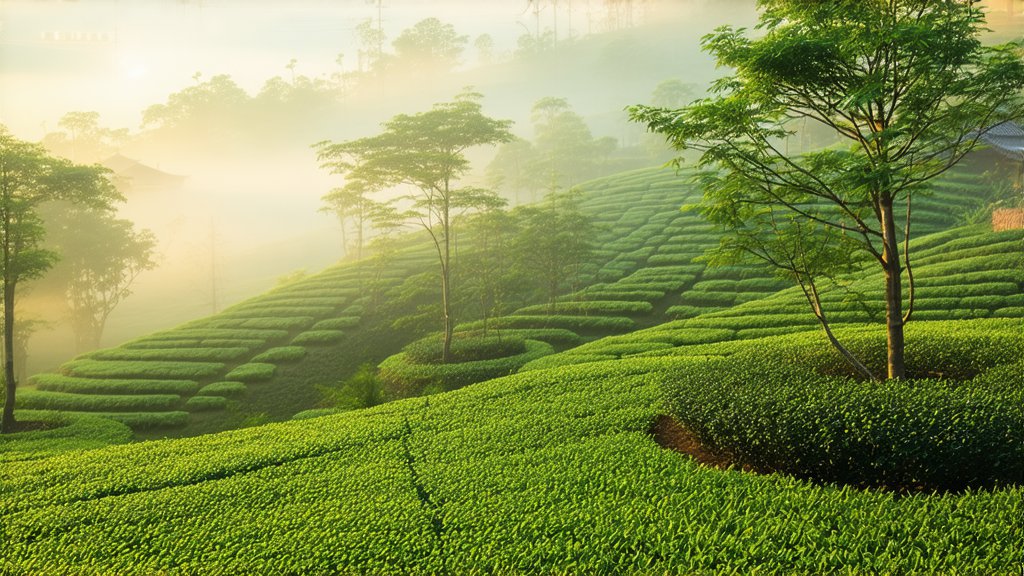
In the vast and diverse landscape of Chinese tea culture, Keemun Black Tea stands out as a quintessential representation of China's rich tea-making heritage. This article delves into the history, varieties, production process, and tasting techniques associated with Keemun Black Tea, offering an in-depth exploration for international readers eager to understand this exquisite tea variety.
The Historical Tapestry of Keemun Black Tea
Keemun Black Tea, also known as Qimen Black Tea, hails from the picturesque mountains of Qimen County in Anhui Province, China. Its origins can be traced back to the early 19th century during the Qing Dynasty. The tea gained international fame when it was introduced to Western markets, becoming one of the first Chinese teas to make a significant impact on global tea culture. Over time, Keemun has evolved, yet it remains a testament to the enduring legacy of Chinese tea craftsmanship.
Varieties of Keemun Black Tea
Keemun Black Tea is not a single type but a category that encompasses several sub-varieties, each with distinct characteristics. The most notable among these are:
- Gong Mei (Palace Beauty): Known for its delicate flavor and golden tips, Gong Mei is considered the highest grade of Keemun Black Tea. It is often used in blends to add sweetness and complexity.
- Xian Bei Dou (Tippy Golden Flowery Broken Orange Pekoe): This variety is characterized by its full-bodied taste and robust aroma, making it a favorite among tea connoisseurs.
- Meng Ding Huang Ya (Tribute Eyebrow): With its tightly rolled leaves and bright liquor, Meng Ding Huang Ya offers a balanced profile that appeals to both novice and experienced tea drinkers.
- Jin Jun Mei (Golden Junnu): Although more commonly associated with Lapsang Souchong, Jin Jun Mei shares similarities with Keemun due to its smoking process, which imparts a unique smoky flavor.
The Art of Crafting Keemun Black Tea
The production of Keemun Black Tea is a meticulous process that requires skill, precision, and a deep understanding of the tea plant. Here's an overview of the traditional steps involved:
- Withering: Freshly harvested leaves are spread out in thin layers to wilt under natural sunlight or in a controlled environment. This step reduces moisture content and prepares the leaves for rolling.
- Rolling: The withered leaves are then rolled to break down cell walls, releasing juices that initiate oxidation. This process can be done using hand-operated rollers or modern machinery.
- Oxidation: The rolled leaves are spread out to allow oxygen to interact with the leaf enzymes, causing a chemical reaction that transforms the green leaves into dark brown or black ones. The degree of oxidation determines the tea's flavor and color.
- Drying: After oxidation, the leaves are dried to halt further oxidation and reduce moisture content. This step can involve roasting over charcoal fires or using hot air dryers.
- Sorting and Grading: Once dried, the tea leaves are sorted according to size, shape, and quality. Higher grades like Gong Mei are selected based on their fine tips and uniform appearance.
- Packaging: Finally, the sorted tea is packaged in airtight containers to preserve freshness and prevent contamination.
Savoring Keemun Black Tea: A Guide to Tasting
To fully appreciate the nuances of Keemun Black Tea, proper brewing and tasting techniques are essential. Here’s a simple guide to help you enjoy this exceptional tea:
- Preparation: Use fresh, cold water and bring it to a boil. Allow it to cool slightly before brewing to avoid scalding the delicate leaves.
- Leaf-to-Water Ratio: For every 200ml of water, use approximately 3 grams of loose leaf tea or one tea bag. Adjust according to your taste preference.
- Brewing Time: Steep the tea for 3-5 minutes, depending on how strong you like your tea. Longer steeping times will result in a bolder flavor.
- Observation: As the tea brews, observe the color transformation from clear water to a rich amber hue. The aroma should be inviting, with hints of floral and fruity notes.
- Tasting: Take a moment to inhale the steam rising from your cup before taking your first sip. Notice the smooth texture and the balance between sweetness and astringency. Pay attention to any subtle flavors that emerge as you continue sipping.
- Aftertaste: After finishing your cup, take note of the lasting impression left in your mouth. A good Keemun Black Tea should leave a pleasant, lingering aftertaste.
In conclusion, Keemun Black Tea is more than just a beverage; it embodies centuries of tradition, artistry, and cultural significance. From its historic roots in Qimen County to its global recognition today, Keemun continues to captivate tea enthusiasts worldwide. By understanding its varieties, production process, and proper tasting methods, one can truly appreciate the depth and complexity of this remarkable Chinese tea. Whether enjoyed alone or shared among friends, Keemun Black Tea invites us to slow down, savor the moment, and connect with a timeless tradition that transcends borders and generations.